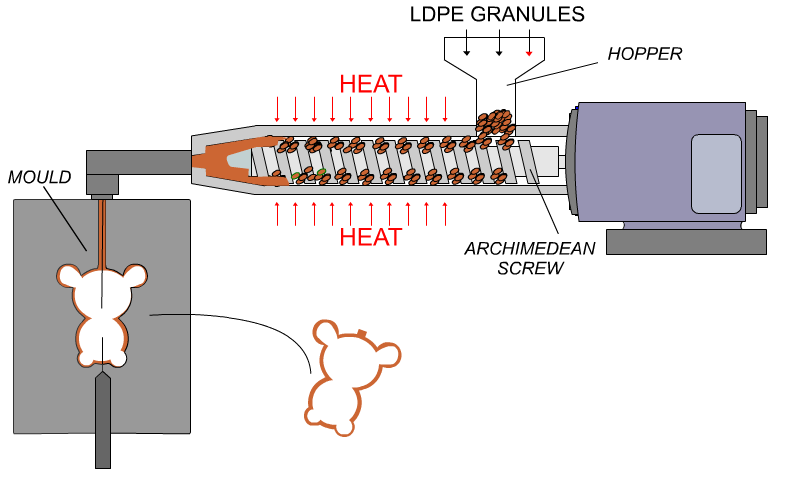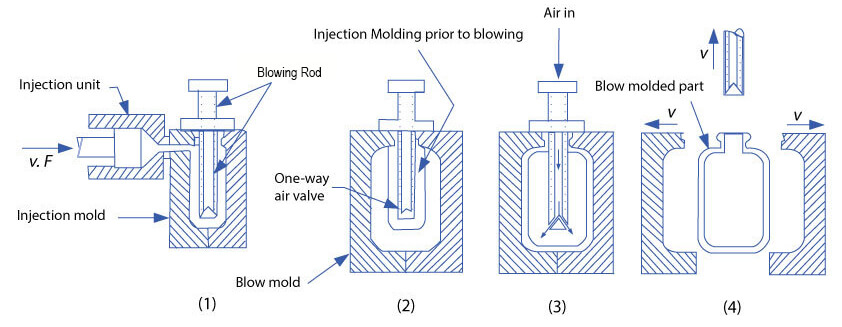Extrusion blow moulding stands as a versatile and widely used manufacturing process for creating hollow plastic products. Understanding the various methods within this technique is crucial for manufacturers aiming to produce high-quality items. In this comprehensive guide, we’ll delve into the methods of extrusion blow moulding, exploring their characteristics and applications.
1. Continuous Extrusion Blow Moulding:

Characteristics:
Continuous extrusion blow molding is a seamless process where molten plastic is continuously extruded and shaped into a parison, a hollow tube-like structure. The parison is then molded within a two-part mold, creating the desired product. This method allows for a continuous production cycle, enhancing efficiency.
Applicability:
Ideal for high-volume production of simple shapes such as bottles and containers, continuous extrusion blow molding is a cost-effective solution with a rapid production rate.
2. Intermittent Extrusion Blow Moulding:
Characteristics:
Intermittent extrusion blow molding involves intermittently stopping the extrusion process to form the parison, making it suitable for more complex shapes. The parison is molded within the mold during each intermittent stop, enabling the production of intricate designs.
Applicability:
This method is well-suited for manufacturing products with complex geometries, irregular shapes, or multiple sections. It provides greater flexibility in design compared to continuous extrusion.
3. Injection Blow Molding:

Characteristics:
Injection blow molding combines elements of injection molding and blow molding. The process begins with the injection molding of a preform, which is then transferred to a blow mold to be inflated into the final product. This method ensures precise control over the shape and wall thickness of the product.
Applicability:
Commonly used for small, high-precision products such as pharmaceutical bottles and cosmetic containers, injection blow molding is favored for its ability to produce intricate details and tight tolerances.
4. Extrusion-Blow Stretch Molding:
Characteristics:
Extrusion-blow stretch molding involves stretching the parison lengthwise before inflation, resulting in improved material distribution and enhanced strength. This method is known for producing lightweight yet durable products.
Applicability:
Widely employed in the production of containers for beverages, personal care products, and automotive components, extrusion-blow stretch molding is favored for its ability to create thin-walled containers with excellent performance characteristics.
As manufacturers navigate the realm of extrusion blow molding, understanding the characteristics and applications of each method is paramount. Whether opting for continuous or intermittent extrusion, injection blow molding, or innovative extrusion-blow stretch molding, selecting the right method depends on the specific requirements of the desired product.
By aligning the chosen method with the intended application, manufacturers can optimize efficiency, reduce costs, and deliver high-quality, precisely crafted hollow plastic products to meet market demands. Stay informed, adapt to evolving technologies, and unlock the full potential of extrusion blow moulding in your manufacturing processes.
